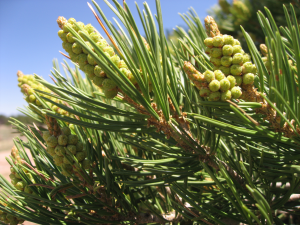
Every living thing goes through a series of changes throughout its lifetime, each change orderly and identifiable. For much of the natural world, these changes are cued by seasonal events and environmental conditions. The concept of nature’s calendar, or phenology, is something many of us have been aware of since attending grade school. Phenology is particularly important to those who enjoy gardening, bird watching, noting signs of changing seasons, and making observations in their backyards and on their land. Systematically studying phenology and using the resulting information are critical aspects of understanding the natural world in which we live.
Monitoring Seasonal Signs
Actually, people have been observing and using phenological cues for centuries. The timing of seasonal events indicated when food was ready for harvest or conditions were right for migration. For example, shadbush blooms indicated to native cultures that shad fish were available for harvest. In earlier times, the Tubatulabal people, from the area that is now Kern County, California, used the ripening of coffeeberry fruits at low elevations to indicate that pinyon pine nuts in the mountains were ready for harvest. The Beaver Moon, or first full moon in early November, meant that the time was right for harvesting beaver pelts in woodlands—the pelts were thick for the winter, and beaver were shoring up their dens by the bright moonlight.
Agriculturalists and naturalists such as Thomas Jefferson, Henry David Thoreau, and Aldo Leopold carefully documented weather conditions and events on their lands for future reference. These historical, handwritten accounts are now valuable to scientists and landowners, enabling them to determine how much earlier now than in decades and centuries past certain plants are blooming and migrating species are arriving.
The science of phenology is not as daunting as the unfamiliar word makes it sound. Phenology—the seasonal timing of certain life cycle events in plants and animals, such as budding, leafing, flowering, hibernation, emergence, and migration—is one of the simplest phenomenon we can use to track and measure changes in species and their responses to changing environments. Phenology is used by horticulturists, arboriculturists and foresters, botanists, wildlife biologists, backyard gardeners, and naturalists for record keeping, pest management, and detection of nature’s rhythms.
Using Lilacs as Weather Trackers
In the 1950s, the US Department of Agriculture sponsored a phenology observation network designed to characterize seasonal weather patterns and improve predictions of crop yields. Blooms of common purple lilacs—and later, cloned individuals of lilac, dogwood, and honeysuckle—were used to track seasonal changes at regional agricultural experimental range stations. (Honeysuckle is no longer used due to its invasive nature.) The data, collected by scientists and community members, were submitted on handwritten note cards and transcribed by Joseph M. Caprio at Montana State University. This information is now a rich data set that has become the backbone of the National Phenology Database developed by the USA National Phenology Network (USA-NPN).
Today the USA-NPN has digitized the data collection process. It supports many groups and agencies conducting phenology monitoring and collects, stores, and shares the resulting data for studying the influence of climate on plants, animals, and landscapes. USA-NPN encourages people to observe phenology via its citizen science program, Nature’s Notebook, not only to collect data for research purposes but also to engage with the natural world. This citizen science program provides a place for everyone, citizens and scientists alike, to systematically capture phenology information and understand changes that are happening.
If you have an interest in phenology, you can be involved with USA-NPN in a variety of ways. For example, if you have a gardening or nature journal with phenology notes or observations, you can enter the compatible data in the National Phenology Database. As part of the Nature’s Notebook program, you can become an observer or join a campaign.
Participating in phenological data collection is not only a personally satisfying experience but also a useful contribution to future generations. When environmental conditions change, life cycles become out of sync in an effort to adapt. Species adaptation takes a long time; thus, changing environmental conditions can have significant ecological impacts. Over time, scientists will be able to use phenological information to conduct more in-depth analyses of the changes occurring in our forests.
LoriAnne Barnett is the Education Coordinator for USA-NPN. She often works with Cooperative Extension Service professionals on relevant projects.
Contributor
LoriAnne Barnett, USA-NPN
For more information
USA-NPN Cloned Lilac and Cloned Plant Project
Sources
Anderson, K.M. (2006). Tending the wild: Native American knowledge and the management of California’s natural resources. Berkeley, CA: University of California Press.
Beaubien, E.G. (1991). Phenology of vascular plant flowering in Edmonton and across Alberta. MS thesis, University of Alberta.
Bouchard & Kennedy. (1990). Clayoquot Sound Indian Land Use. Report prepared for MacMillan Bloedel Ltd.
“Life-cycle.” Encyclopedia Britannica Online Academic Edition. Encyclopedia Britannica Inc., 2012. 14 Dec. 2012.
Peacock, S.L. (1992). Piikani Ethnobotany: Traditional plant knowledge of the Piikani Peoples of the Northwest Plains. MS thesis. University of Calgary.
Virginia Department of Education. 2010. Virginia animals and their habitats. Topic 4. Retrieved from http://www.doe.virginia.gov/instruction/cross-curricular_instruction/science/animals_habitats/index.shtml
